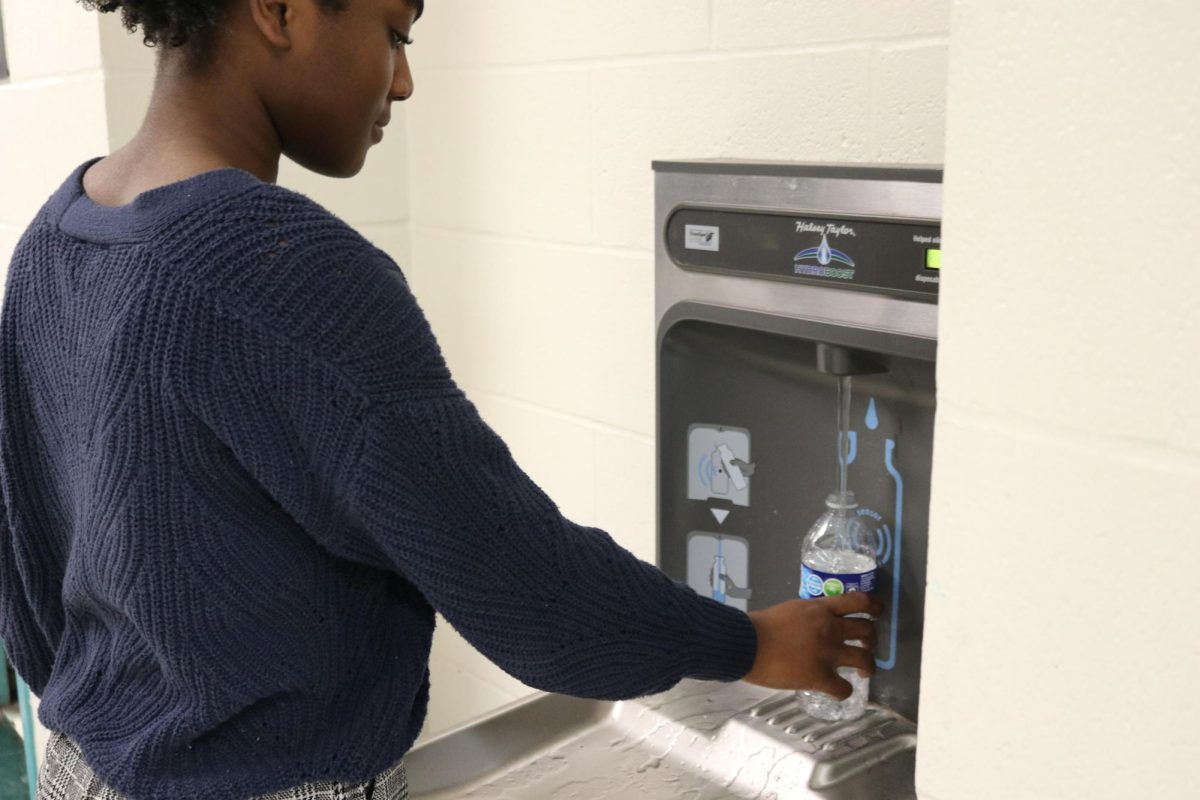Policies create frustration
September 15, 2014
On the first lunch period of the school year, Erin Underwood, Junior, stepped into the school store to purchase her usual: a package of Reese’s Peanut butter Cups and a bag of Rold-Gold pretzels.
“Every shelf was filled, but there was no candy. I was really surprised that they no longer carry the good stuff, like chocolate and bags of regular chips. It was pretty sad,” Underwood said.
Underwood purchased her $1.00 pack of gum and left the store, which cut the store’s profit of Underwood’s purchase by at least 50%.
Disappointed by updated policies of the USDA, many students are inadvertently boycotting the school store and its offerings.
“Sales have been dramatically reduced by this new policy,” said Karen Smith, School Store Manager. “I would say that 99% [of students] are upset by changes and want to know whose idea this is and what they can do about it.”
The school store projects a revenue drop of about 60% in food sales from last year to this year, and so far the first few weeks have shown this outcome.
Many members of the MHS community have also questioned the true healthiness of these improved snack options.
“Majority [of school store volunteers] are against these changes and feel at the high school level, students should be given the ability to make these choices for themselves,” Smith said. “Most think we should offer both options: the old items and the new items. “
However, Smith says that everyone is very surprised about the amount of choices the school store was able to come up with that met the USDA guidelines, as many thought that the store would have fairly empty shelves.
As a part of the “Healthy Hunger-Free Kids Act of 2010,” the revamped USDA guidelines require snacks to be a “whole grain-rich” grain product, or have the first ingredient of a fruit, vegetable, dairy product, or a protein. The guidelines also set restrictions of calories, sodium, fats, and sugars.
While these restrictions are a step in the right direction for a healthier youth, Dr. Steve Willey says, “While [the new snacks] may be lower calorie, the latest data [shows that] our food has far more reaching effects than previously thought.”
Willey says that the constituents of food are a big determinant of how the body produces hormones that subsequently make one feel full, or alternatively, make one continue to feel hungry.
“The Betty Crocker cookie bars and low-fat Doritos are still high in carbohydrate percentage in spite of their lower calories,” Willey said. “This can lead to greater appetite later because your gut is not producing the optimal hormones, causing you to eat more later, counteracting the low-calorie idea behind these changes.”
While the new additions to the school store may not be incredibly healthier, the snacks of the past, such as Snickers and Oreos, were very bad for the body as well because the new and old snacks alike both have chemical additives.
Although they contain a higher calorie content, Willey recommends choices like nuts and fresh fruit, which studies have shown do not cause weight gain, but aid in improving many health parameters.
“There needs to be better education along the way on what the truly good habits of diet and exercise are for students to actually follow them, “ Willey said. “Without that people will just bring things from home or get them somewhere else besides the school store.”


















